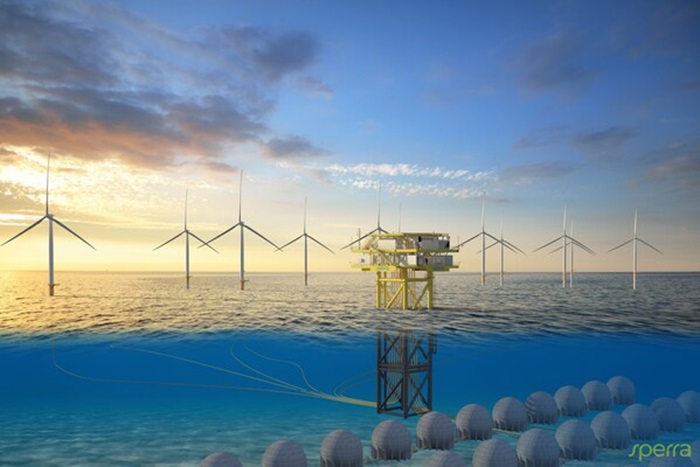The U.S. and German governments have approved grants to the tune of $7.7 million to unleash the power of the ocean for renewable energy storage.
U.S.-based Sperra has been awarded a $4 million grant by the from the US Department of Energy Water Power technologies Office to advance innovation in pumped storage hydropower technologies.
In this project, Sperra, which specializes in 3D-printed concrete products, including wind turbine towers and anchors for floating solar, wave and wind energy systems, will design, fabricate, and test a 10-meter diameter, 500 kW / 600 kWh energy storage unit at a depth of 500 to 600 meters off the coast of Southern California. (According to a release from Fraunhofer IEE, the figures are a bit different – it is a nine-meter diameter, 0.5 MW/ 0.4 MWh system).
Sperra will manufacture the 400-ton concrete sphere using 3D printing, thereby lowering the cost of manufacturing by replacing labor-intense process of traditional concrete construction. The sphere will have an opening at the top into which an underwater motor pump, also known as a pump turbine, will be installed in a pipe.
The US funding unlocks a parallel grant on the opposite side of the Atlantic from the German Ministry for Economic Affairs and Climate Action (BMWK) amounting to $3.7 million (EUR 3.4 million). German institute for energy economics and energy system technology Fraunhofer IEE and supplier of submersible motor pumps, thrusters, and plunger pumps PLEUGER Industries are funding beneficiaries.
The collaborative work aims to develop a low-cost, long-duration, subsea energy storage technology that supports electrical grid decarbonization. The partners are aiming for the system off Long Beach near Los Angeles to be put into operation by the end of 2026 at the latest.
“Subsea pumped storage hydropower (SPSH) with 3D-printed concrete will accelerate the energy transition, employing local labor and using immediately available materials. We are very excited about the international collaboration on this project with Fraunhofer IEE and PLEUGER, and are grateful that the Water Power Technologies Office recognizes the tremendous potential of this work,” said Jason Cotrell, CEO and Founder of Sperra.
Different approach
Deep sea pumped hydro storage is a novel approach towards the realization of an offshore pumped hydro energy storage system (PHES), which uses the pressure in deep water to store energy in hollow concrete spheres. The spheres are installed at the bottom of the sea in water depths of 600 m to 800 m.
The work on this technology in Germany was initited by the German Fraunhofer Institute in 2012 under the name – the StEnSea (Stored Energy in the Sea) project. After a successful field test with a smaller model in Lake Constance (below image: Field test with a three-meter sphere in Lake Constance, source: Fraunhofer IEE), the researchers are now preparing a test run with partners off the Californian coast.
Continue reading this article on pv magazine’s ESS News
This content is protected by copyright and may not be reused. If you want to cooperate with us and would like to reuse some of our content, please contact: editors@pv-magazine.com.









By submitting this form you agree to pv magazine using your data for the purposes of publishing your comment.
Your personal data will only be disclosed or otherwise transmitted to third parties for the purposes of spam filtering or if this is necessary for technical maintenance of the website. Any other transfer to third parties will not take place unless this is justified on the basis of applicable data protection regulations or if pv magazine is legally obliged to do so.
You may revoke this consent at any time with effect for the future, in which case your personal data will be deleted immediately. Otherwise, your data will be deleted if pv magazine has processed your request or the purpose of data storage is fulfilled.
Further information on data privacy can be found in our Data Protection Policy.